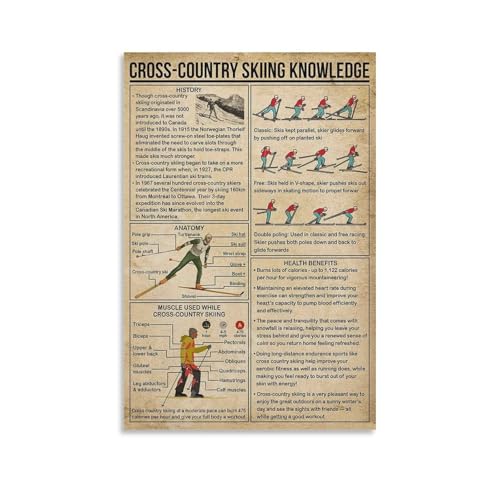Skiing has always been one of my favorite ways to embrace winter, but let’s be honest—it’s not just about the thrill of the slopes. Staying safe and making the most of the experience matters too. That’s where GPS trackers have started to catch my attention. With promises of better navigation, safety, and even tracking your performance, they sound like a skier’s dream gadget.
But are they really worth it? I’ve found myself wondering if a GPS tracker could truly enhance my time on the mountain or if it’s just another tech trend. Let’s dive into what these devices offer and whether they’re a game-changer or just extra gear to lug around.
Benefits Of Using A GPS Tracker While Skiing
Skiing with a GPS tracker brings a new level of safety, precision, and performance to the slopes. For someone like me, who’s passionate about winter sports, it’s a game-changer in more ways than one.
Enhanced Safety And Emergency Assistance
A GPS tracker boosts safety by ensuring accurate location tracking. If I ever lose my way or get injured on remote trails, my exact position can be shared with rescue teams instantly. Many trackers also include SOS features, which connect to emergency services when activated. This peace of mind is invaluable, especially in unpredictable mountain weather.
Real-Time Navigation And Tracking
Navigating expansive ski areas becomes easier with real-time tracking. I use GPS maps and trail overlays to avoid getting lost and plan efficient routes. These devices help me stay aware of my position relative to nearby landmarks, chairlifts, or even friends if we’re skiing as a group. It saves both time and energy.
Analyzing Performance And Enhancing Skills
Performance tracking makes a significant difference in honing my skills. By reviewing data like speed, altitude changes, and distance skied, I spot patterns in my technique. Some trackers provide insights into time spent on downhill runs versus chairlift rides, helping me make the most of every ski day. For anyone serious about improvement, this data is priceless.
Considerations Before Using A GPS Tracker
Skiing with a GPS tracker can enhance my time on the slopes, but there are several factors I always consider before relying on one. These details impact how well the device suits my needs during snow adventures.
Cost And Affordability
Price plays a critical role in choosing a GPS tracker. High-quality models can cost between $150 and $500, depending on features like real-time tracking, detailed maps, and durability. Subscription-based services often add monthly or annual fees, ranging from $5 to $15. I weigh the long-term investment against how often I ski and prioritize features I genuinely use, like emergency alerts or advanced navigation.
Ease Of Use And Compatibility
Simplicity matters when I’m gearing up in cold conditions. Interfaces should allow me to make quick adjustments—preferably with gloves on. I look for trackers with user-friendly navigation and clear displays. Compatibility with my smartphone or smartwatch is also essential since integrated apps often make it easier to upload data or receive real-time updates on the go.
Battery Life And Reliability In Cold Weather
Battery performance can make or break my experience, especially in freezing temperatures. GPS trackers with a battery life of at least 15 hours are ideal for full-day skiing. Many devices lose efficiency in extreme cold, so I check for models tested for sub-zero conditions or built with weather-resistant designs. Carrying a portable charger can also be a lifesaver for longer trips.
Popular GPS Trackers For Skiing
Exploring different GPS trackers has become a crucial part of my ski trips. These devices can enhance safety and performance, but choosing the right one depends on understanding key features and comparing popular options.
Features To Look For In A GPS Tracker
Focusing on specific features helps me find a tracker that matches my skiing needs:
- Durability: A tracker must endure extreme cold and potential impacts. I always check if it’s weather-resistant and built for rugged conditions.
- Real-time Tracking: Knowing my exact location, even in remote mountain areas, is essential for safety and navigation. Devices with live tracking features give me confidence.
- Battery Life: Long ski days demand a reliable battery. I look for models with at least 15 hours of life and compatibility with cold weather.
- Altimeter and Speed Tracking: I love analyzing my runs, so I prefer trackers that measure altitude changes and speed during descents.
- Ease of Use: Ski gloves make small buttons or complex interfaces frustrating. Touchscreens or voice commands simplify usage.
Comparison Of Top GPS Trackers For Ski Enthusiasts
Based on my experiences and thorough research, I’ve found these trackers worth considering:
| Tracker | Key Features | Price Range |
|---|---|---|
| Garmin inReach Mini 2 | Compact, satellite messaging, SOS functionality, and excellent battery life in extreme cold | $399-$449 |
| Suunto 9 Baro | Long battery life, accurate altimeter, and built-in GPS with detailed performance tracking | $350-$500 |
| Apple Watch Ultra | Advanced navigation tools, fitness metrics, rugged build, and seamless iPhone integration | $799 |
| PISTE Pro+ | Real-time tracking, group location sharing, ski-specific stats, and strong cold-weather performance | $300-$350 |
My favorites balance durability, precision, and usability. Skiers with various priorities can explore these options for the best fit.
Is A GPS Tracker Worth It For Skiers?
For me, skiing combines pure excitement and a deep appreciation for nature, but safety and efficiency are just as important. Using a GPS tracker has transformed how I experience the slopes, especially in challenging conditions.
Situations Where It’s Most Beneficial
Backcountry trips rely on tools like GPS trackers for both safety and navigation. Skiing off-piste creates incredible opportunities to explore untouched terrain, but it also comes with risks like getting lost or encountering avalanches. Having a device that pinpoints my exact location or alerts rescue services with the press of a button is invaluable.
Large ski resorts also benefit from GPS tracking. With hundreds of interconnected trails or lifts, it’s easy to take a wrong turn or lose the trail map. GPS navigation apps enable me to see my exact position in real time, plan routes, and make the most of my time on the mountain without wasting energy doubling back.
Family trips are another time a GPS tracker proves its value. If I’m skiing with loved ones on packed slopes, staying connected is critical. GPS tools often link with apps to track group members and ensure everyone stays safe, even if we split up.
Alternatives To GPS Trackers
One affordable alternative is mobile apps on a smartphone. Tools like Ski Tracks or FATMAP provide GPS tracking and mapping functions, but they rely on battery-draining mobile devices. Without cold-resistant phone cases, battery life might not last through a full day of skiing, especially in sub-zero temperatures.
Smartwatches offer another option if they come with GPS capabilities. Paired with skiing apps, they can track my activity and guide me through trails, though their display size and lack of emergency features fall short compared to standalone trackers.
Maps and compasses remain a classic option, though they demand more skill and constant attention to use. While I respect their practicality in emergencies, they lack the real-time features and safety options that modern GPS tools provide, making them a secondary choice for me.
Conclusion
Skiing with a GPS tracker has the potential to transform your time on the slopes. Whether you’re prioritizing safety, exploring new terrain, or tracking your performance, these devices offer features that can truly elevate your experience. While they might not be essential for everyone, they’re a worthwhile investment for those who value convenience, precision, and peace of mind.
At the end of the day, it’s all about finding what works best for your skiing style and needs. If a GPS tracker aligns with your goals, it could be the perfect companion for your next adventure.
















